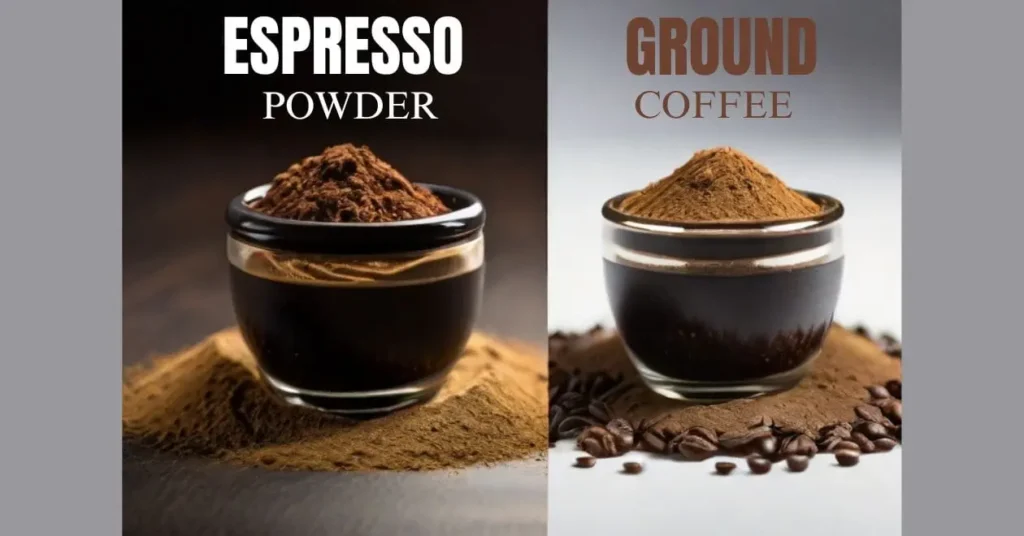Cold brew and iced coffee each offer a unique taste experience. Cold brew, made with a longer brewing process, has a smoother, less acidic flavor profile. On the other hand, iced coffee is made by brewing hot coffee and then cooling it down with ice, resulting in a more bold and robust taste.
Cold Brew and Iced Coffee are two popular choices for coffee lovers looking for a refreshing and caffeinated beverage. While they may seem similar, there are key differences between the two that can influence your decision.
What Is Cold Brew?
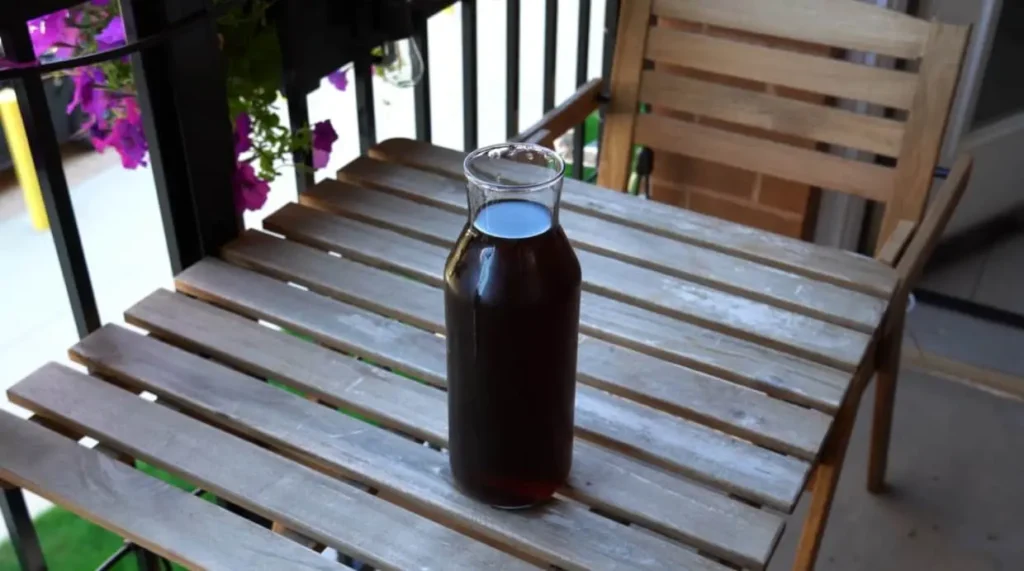
Cold brew is a method of brewing coffee that involves steeping coarsely ground coffee beans in cold or room-temperature water for an extended period, typically ranging from 12 to 24 hours. This slow steeping process allows the flavours and compounds in the coffee grounds to gradually extract into the water, resulting in a smooth, less acidic, and slightly sweeter coffee concentrate.
Unlike traditional hot brewing methods, which use hot water to quickly extract flavours from the coffee grounds, cold brew relies on time to achieve a rich and flavorful brew without the bitterness often associated with hot-brewed coffee. Once steeped, the coffee concentrate is usually strained to remove the grounds, and it can be diluted with water or milk before serving over ice.
How Cold Brew Coffee Is Made
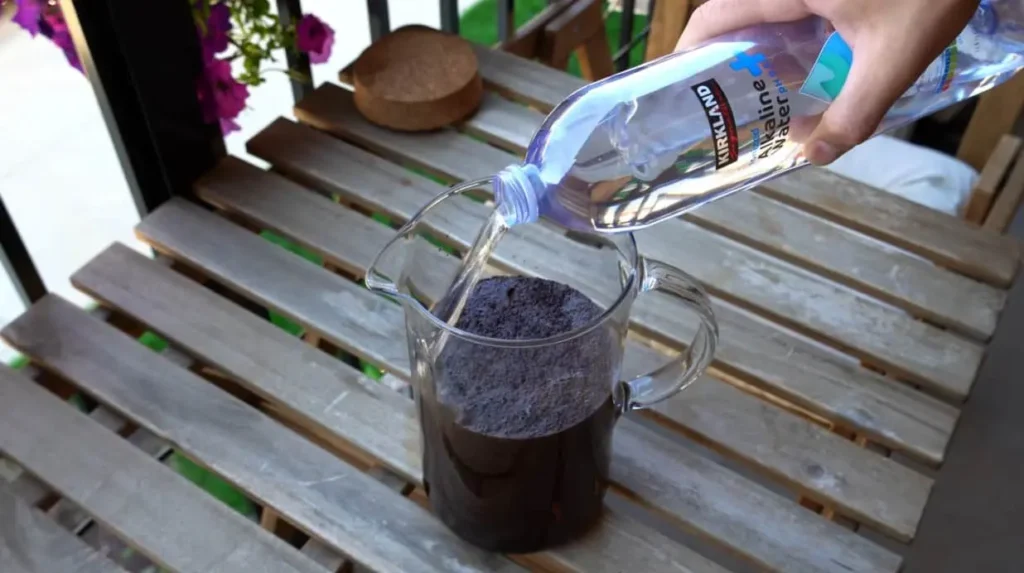
The process of making Cold Brew is simple, but it requires patience. To make Cold Brew, you’ll need coarsely ground coffee beans and cold or room temperature water. Here’s a step-by-step guide:
- Measure out your desired amount of coarsely ground coffee. As a general rule, you’ll want to use a 1:4 coffee to water ratio. So, for example, if you’re using 1 cup of coffee, you’ll need 4 cups of water.
- In a large container or jar, add the coffee grounds and water. Stir gently to ensure all the grounds are evenly wet.
- Cover the container or jar and let it steep for at least 12 hours, preferably up to 24 hours.
- Once the steeping time is up, strain the cold brew concentrate through a fine-mesh sieve or a coffee filter to remove the coffee grounds.
- Store the cold brew concentrate in a sealed container in the refrigerator. It can last up to 1 week.
Flavor Profile Of Cold Brew
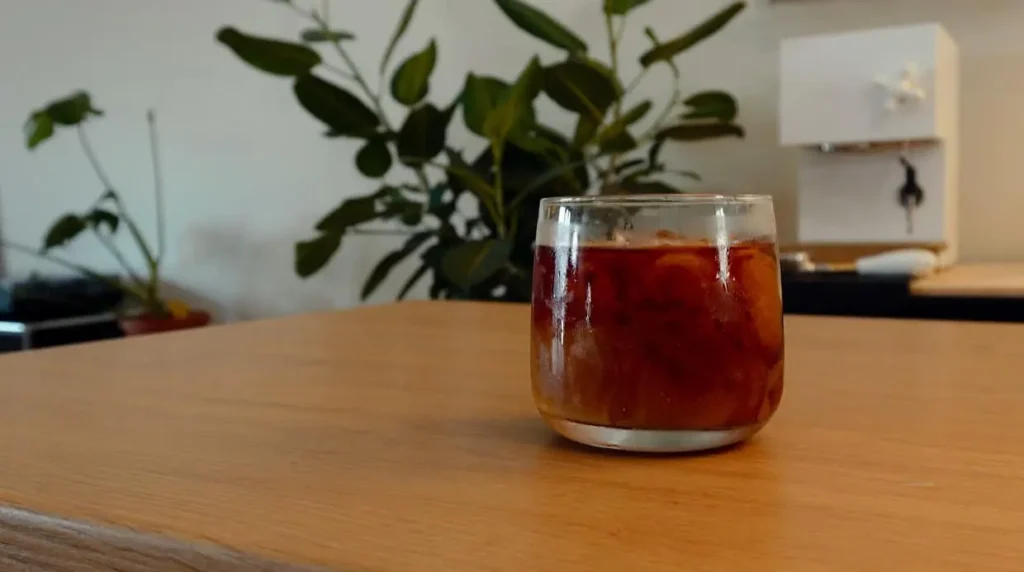
The flavour profile of Cold Brew is often described as smooth, mellow, and less acidic compared to hot brewed coffee. The slow extraction process of Cold Brew results in a drink that maintains the natural flavours of the coffee beans while reducing the bitterness and acidity.
This makes Cold Brew a popular choice for those who prefer a less intense and more balanced coffee experience. Additionally, Cold Brew has a naturally sweet and chocolatey undertone, which further adds to its appeal.
What Is Iced Coffee?

Iced coffee is a beverage made by brewing coffee and then cooling it down before serving it over ice. It can be made using various methods, such as brewing hot coffee and then letting it cool, or using cold brewing techniques where the coffee grounds are steeped in cold water for an extended period.
Iced coffee is often served sweetened and/or with milk or cream, and it can be flavoured with syrups or other additives according to personal preference. It’s a popular choice, particularly in warmer climates or during the summer months, as it provides a refreshing and cooling alternative to hot coffee.
How Iced Coffee Is Made
Iced coffee is a refreshing beverage made from coffee that is brewed hot and then chilled. There are a few different methods for making iced coffee, but here’s a general overview of the process:
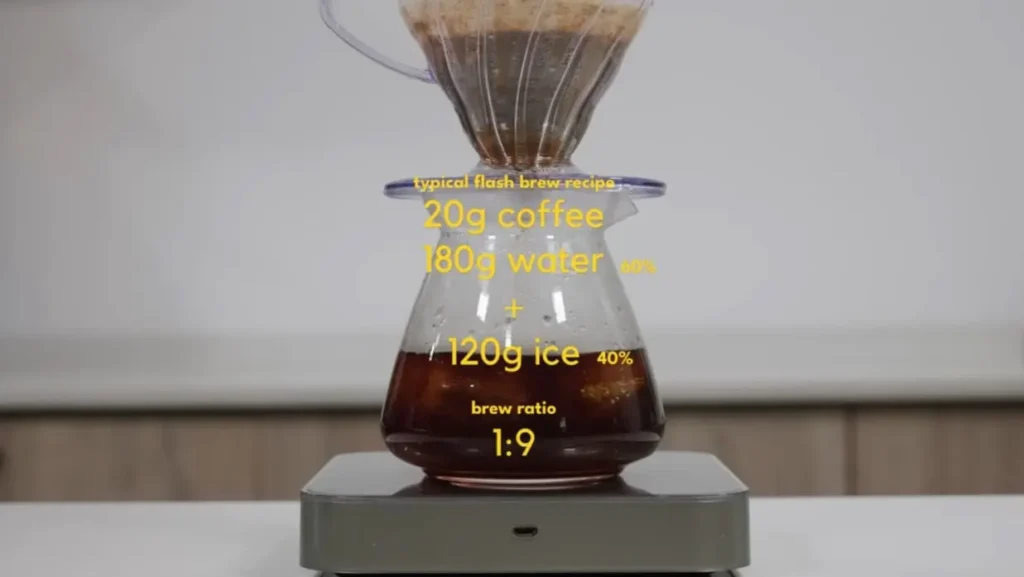
- Brewing Coffee: Start by brewing a batch of strong coffee using your preferred brewing method. You can use a drip coffee maker, pour-over, French press, AeroPress, or any other method you prefer. Make the coffee stronger than usual since it will be diluted when you add ice.
- Cooling the Coffee: After brewing, allow the coffee to cool down to room temperature. You can speed up this process by transferring the hot coffee to a heat proof container and placing it in the refrigerator or adding ice cubes directly to the hot coffee.
- Sweetening (Optional): If you like your coffee sweetened, you can add sugar, simple syrup, honey, or any sweetener of your choice to the cooled coffee. Stir until the sweetener is fully dissolved.
- Adding Ice: Once the coffee has cooled down, fill a glass with ice cubes. You can use regular ice cubes or coffee ice cubes for an extra boost of coffee flavor without diluting the drink.
- Pouring the Coffee: Pour the cooled coffee over the ice cubes in the glass. Leave some space at the top of the glass for any additional ingredients you may want to add, such as milk or cream.
- Adding Milk or Cream (Optional): If you like your iced coffee creamy, you can add milk, cream, half-and-half, or a dairy-free alternative like almond milk, coconut milk, or oat milk. Stir gently to combine.
- Flavourings (Optional): You can customise your iced coffee with various flavourings such as vanilla extract, chocolate syrup, caramel sauce, or flavoured syrups. Add these to taste and stir well.
- Final Touches: If desired, you can garnish your iced coffee with whipped cream, cocoa powder, cinnamon, or a sprinkle of your favourite spices for an extra touch of flavour and presentation.
Flavor Profile Of Iced Coffee

When it comes to flavour, iced coffee offers a range of possibilities. The taste of iced coffee can vary depending on the type of coffee beans used, the brewing method, and any additional flavours or sweeteners added. In general, iced coffee tends to be less intense and more refreshing than hot coffee, with a milder and often sweeter flavour profile.
The flavour profile of iced coffee can also be influenced by the type of milk or creamer used. Adding milk or cream can create a smoother and creamier taste, while sweeteners like sugar or syrups can add a touch of sweetness. Additionally, various flavourings such as vanilla, caramel, or chocolate can be added to enhance the overall taste experience.
Recommended Post: Iced Coffee Makers Vs. Cold Brew Makers
Differences Between Cold Brew And Iced Coffee
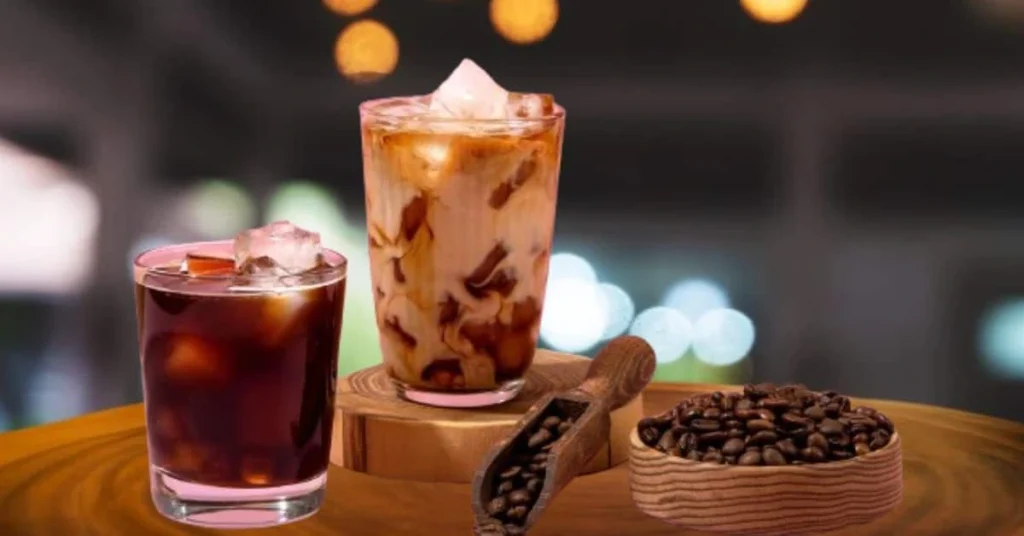
When it comes to choosing between cold brew and iced coffee, there are a few key differences that can greatly impact your overall coffee experience. From the brewing method to the time required and even the caffeine content, each option brings its own unique characteristics to the table. Let’s take a closer look at the differences between cold brew and iced coffee.
Brewing Method
The first noticeable difference between cold brew and iced coffee lies in their brewing methods. Cold brew coffee is made by steeping coarsely ground coffee beans in cold water for an extended period of time, typically 12 to 24 hours. This slow extraction process allows the coffee to develop a smoother, less acidic flavour profile. On the other hand, iced coffee is brewed using hot water and then cooled down by adding ice cubes or refrigerating it. This method produces a more traditional coffee flavour with a slightly acidic kick.
Time Required

Another factor to consider is the time required to make each type of coffee. Cold brew coffee demands a significant amount of patience due to its lengthy brewing process. You need to plan ahead and prepare the night before if you want to enjoy a refreshing cold brew in the morning. Comparatively, iced coffee can be quickly prepared by brewing it with hot water and then immediately cooling it down. This means you can satisfy your coffee craving in a fraction of the time it takes to make cold brew.
Strength And Flavor
When it comes to strength and flavour, cold brew and iced coffee offer distinct experiences. Cold brew is known for its smooth and mellow taste, with less bitterness compared to hot brewed coffee. The slow extraction process results in a concentrated brew that can be diluted with water or milk to taste. On the other hand, iced coffee offers a bolder and slightly more acidic flavour profile. It retains more of the coffee’s natural oils and flavours due to the hot brewing method, providing a more robust taste.

Caffeine Content
Finally, we come to the caffeine content. Despite popular belief, cold brew coffee isn’t necessarily higher in caffeine than iced coffee. While the extended steeping process of cold brew extracts more flavour compounds, it also limits caffeine extraction to some extent. However, due to the higher coffee-to-water ratio typically used in cold brew, the resulting concentrate is often diluted, resulting in a similar or lower caffeine content compared to iced coffee. The caffeine content of iced coffee can vary depending on the brewing strength and the type of beans used.
Also Recommended: Why Does Cold Brew Have Carbs?
When To Choose Cold Brew Or Iced Coffee
Whether you have a preference for strength and flavor, the available time, temperature preference, or caffeine sensitivity, considering these factors will help you make the right choice. Let’s dive deeper into each aspect to understand when to choose cold brew or iced coffee.

Preferences For Strength And Flavor
One of the primary factors to consider when choosing between cold brew and iced coffee is your preference for strength and flavour. Cold brew, known for its smooth and mellow taste, has a less acidic profile compared to traditional hot brewed coffee. If you enjoy a bold and full-bodied flavour without the bitterness, cold brew might be the ideal choice for you.
On the other hand, if you prefer a more pronounced acidity and a stronger taste, then iced coffee could be more suitable. Iced coffee is made by pouring hot brewed coffee over ice, which further dilutes the drink. This method retains the coffee’s original flavours and often results in a more robust taste. So, if you like your coffee to have a tangy kick and a stronger caffeine punch, then iced coffee is the way to go.
Time Available
The time you have available can also play a role in deciding between cold brew and iced coffee. Cold brew typically requires more time and preparation. If you are someone who plans ahead or enjoys preparing coffee in advance, then cold brew is a great option. You can prepare a large batch that can last a few days, allowing you to conveniently grab a chilled coffee whenever you need it.
On the other hand, if you are short on time or prefer a quick and straightforward brewing method, iced coffee is the better choice. Since it is made by pouring hot brewed coffee over ice, you can quickly prepare it on the spot. It is an excellent option for those who crave a refreshing coffee drink immediately without investing much time in the preparation process.
Temperature Preference
Your temperature preference also contributes to the decision-making process. Cold brew is served cold or at room temperature, making it perfect for hot summer days or when you are craving a refreshing chilled beverage. It is a great choice for those who enjoy the coolness and smoothness of a cold drink.
Conversely, if you prefer your coffee to be served piping hot or warm, then iced coffee is the better option. Although it is poured over ice, it still retains a relatively warm temperature due to the hot brewed coffee used. So if you enjoy sipping on warm coffee even in warmer weather, iced coffee will offer you the temperature you desire.
Caffeine Sensitivity
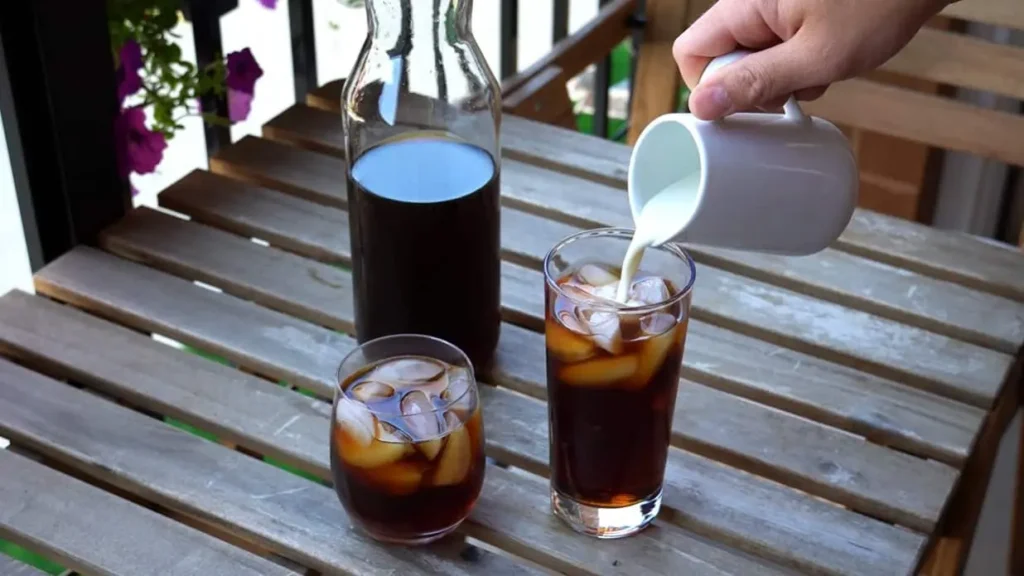
If you have caffeine sensitivity or prefer a drink with lower caffeine content, this will influence your choice between cold brew and iced coffee. Cold brew generally has a higher caffeine concentration compared to iced coffee. If you need that extra energy boost or enjoy a stronger caffeine kick, then cold brew is the way to go.
If you are more sensitive to caffeine or prefer a drink with a lower caffeine content, then iced coffee might be a better choice. The hot brewing method used for iced coffee typically results in a slower extraction of caffeine, resulting in a milder effect. So, if you want to enjoy the taste of coffee without the intense caffeine buzz, iced coffee is a suitable option.
Conclusion
Both cold brew and iced coffee offer refreshing chilled options for coffee lovers. While cold brew boasts a smoother and less acidic taste, iced coffee provides a quick and convenient way to enjoy the coffee flavour. Ultimately, the choice between the two comes down to personal preference and the desired flavour profile.
So, whether you prefer the slow steeping process of cold brew or the refreshing simplicity of iced coffee, both options offer a delightful way to enjoy your caffeine fix.
Ronsil
Meet Ronsil, the master barista behind EspressoRivo. With years of experience in the coffee industry, he brings a wealth of knowledge and passion to the table. As the owner of a successful coffee shop, Ronsil is a sought-after adviser in the field. His expertise and love for the craft shines through in every cup he serves. We are honored to have him as part of our team at EspressoRivo
